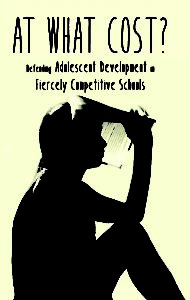
Will educators and parents dare to NOT return to normal?
Asynchronous learning.
Synchronous learning.
Hybrid learning.
In early March 2020, these terms of how we teach students of all ages were nowhere near the everyday vernacular they are today. And then, disaster struck as a deadly virus quickly became a worldwide pandemic.
In very short order, schools and colleges worldwide changed dramatically. They made extraordinary changes, behaviorally and technologically, with how they taught and the overall presentation of their curricula. Every school changed how and what it taught. Teachers, administrators, parents, and students worked together. They collaborated when it wasn’t easy or comfortable, and, in most cases, they succeeded together. Schools and colleges everywhere should take great pride in how they have changed, how they adapted their teaching and learning in response to the pandemic.
As a worldwide community, we were alarmed and scared as our everyday lives were changing for the worse and there seemed hardly anything we could do to prevent it. In many ways, the world is still in a major and ongoing health crisis, one that communities and governments are working to combat.
Adolescents face another health crisis
Meanwhile – and closely associated with the pandemic – another major health crisis, one that has been growing for years, is picking up steam. “Clinicians and educators have witnessed the escalating rates of anxiety and depression among high-achieving youths,” writes psychologist Emily Esfahani Smith in the New York Times. “America’s decades-long trends of harsher competition, globalization, social media comparisons, endless striving on behalf of an uncertain future and scarce admissions to brand-name colleges have created a culture of fear and anxiety.” This year, the fear and panic of not being admitted to a college of one’s choice was rampant among U.S. high school seniors – and illustrated by Harvard’s lowest-ever admissions rate: 3.43% of its nearly 50,000 applicants.
Well before the stress and uncertainty caused by COVID-19, the CDC had documented the alarming rates of suicide – and suicidal ideation and self-harm — among adolescents:
- In 2018, suicide was the second leading cause of death for high school-aged youths (14-18 years) and accounted for approximately one-third of every injury-related death among this age group.
- Although suicide is a major public health problem, many more youths make suicide attempts and struggle with suicidal ideation. During 2018, data from emergency departments (EDs) show approximately 95,000 youths aged 14-18 visited EDs for self-harm injuries.
While it may not be considered as serious as the COVID-19 pandemic, adolescent depression and suicide is a psychological “epidemic” that has yet to be addressed.
In my book, At What Cost? Defending Adolescent Development in Fiercely Competitive Schools, I detail a number of ways in which the intense pressures and academic demands imposed on adolescents by the many adults in their lives – teachers, school administrators, and parents – are at the very center of why so many teens experience so much anxiety and depression and why so many tragically die by suicide.
Adults can help teens by changing school
Why am I making reference to the current pandemic as I talk about the psychological epidemic of teenage depression and suicide? The simple reason is this: Just as hundreds of millions of adults in schools around the world changed almost overnight in response to the pandemic’s threat to the health of their students, families, and selves, these adults have demonstrated that they can change – when they see a need to do so.
They don’t have to overschedule and overwork their students.
They don’t have to over-focus on the college admissions process almost from the time these now-adolescents were born.
They don’t have to treat adolescents like adults long before the teens have developed adult cognitive and emotional skillsets.
Mostly, these school adults don’t have to resist a developmentally reasonable schedule for their students because they fear being perceived as having lost their standards, as having lost their school’s distinctiveness, or worse, as having become a “vanilla school.”
My point is: educators, school administrators, and parents don’t have act in ways that put an unfathomable amount of pressure on kids such that they fall victim to anxiety, depression and suicide.
School adults and parents have clearly demonstrated their abilities to change when their very safety and lives were/are in jeopardy. Are they willing to continue with some of these changes as the pandemic slowly ends, so that adolescents can have academic, extra-curricular, and homework schedules that reflect the easing of pressure they experienced at the start of the pandemic?
At that time, again, because of the changes made by adults, adolescents had lighter schedules, less homework, fewer extra-curricular activities, and they got much more sleep! In many ways – at least initially – the pandemic led to a gift of time and to better overall health for adolescents everywhere.
Can we evolve to business as unusual?
As we slowly return to “business as usual” – to the harried life before the pandemic – can’t we start thinking of returning to “business as unusual” instead? To schedules and school expectations that are actually “in sync” with adolescents’ development?
How might synchronous and asynchronous approaches to learning be utilized to enhance the mental and physical health of our teenagers?
How might remote and hybrid learning methods serve the same purpose?
Across the country and around the world, we now have an entire cadre of teachers, administrators, and parents who’ve been “trained” in how to maximize these approaches for the betterment of their students and children. How can we now take full advantage of all that on-the-job training so that our students continue to benefit?

